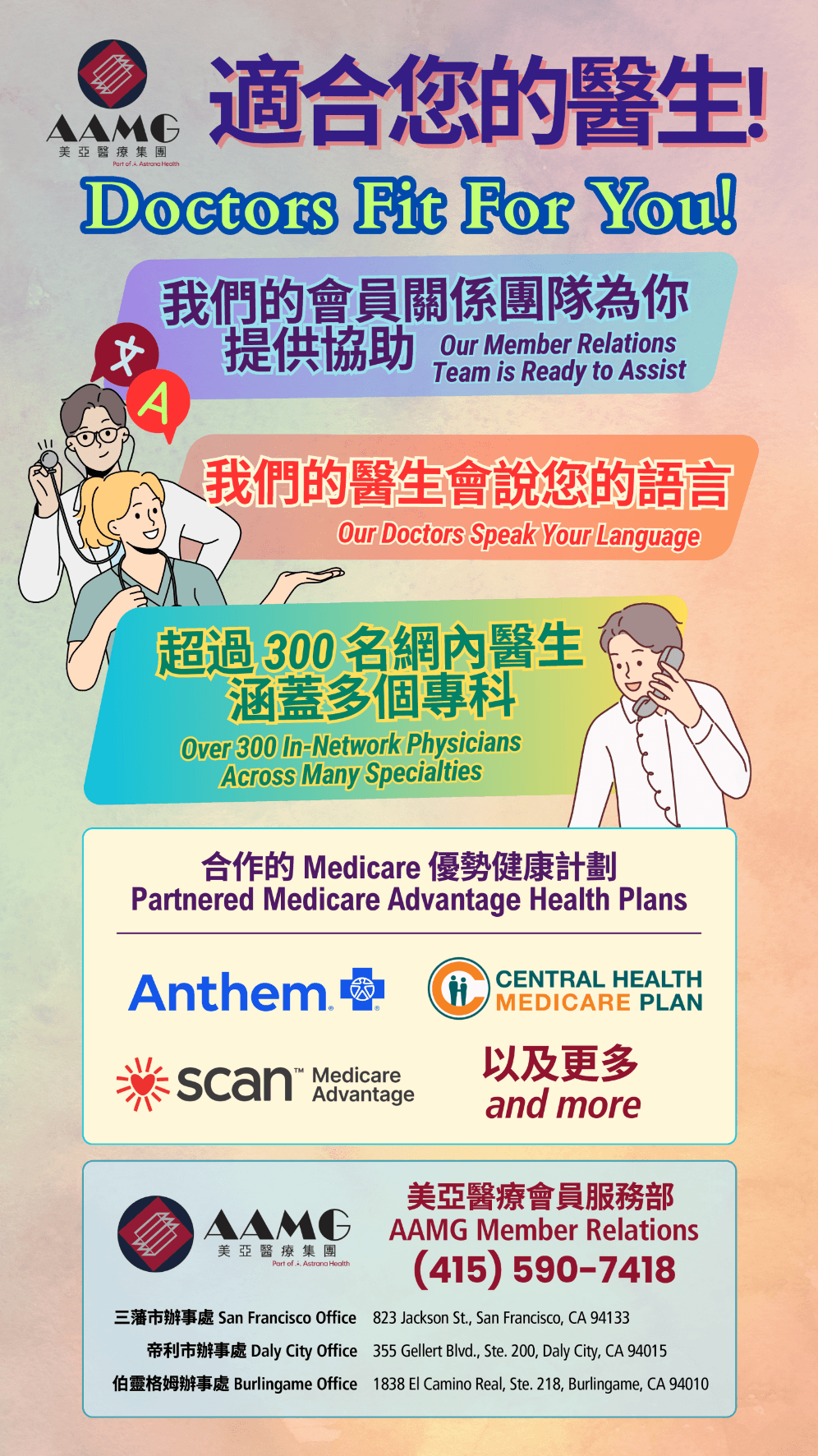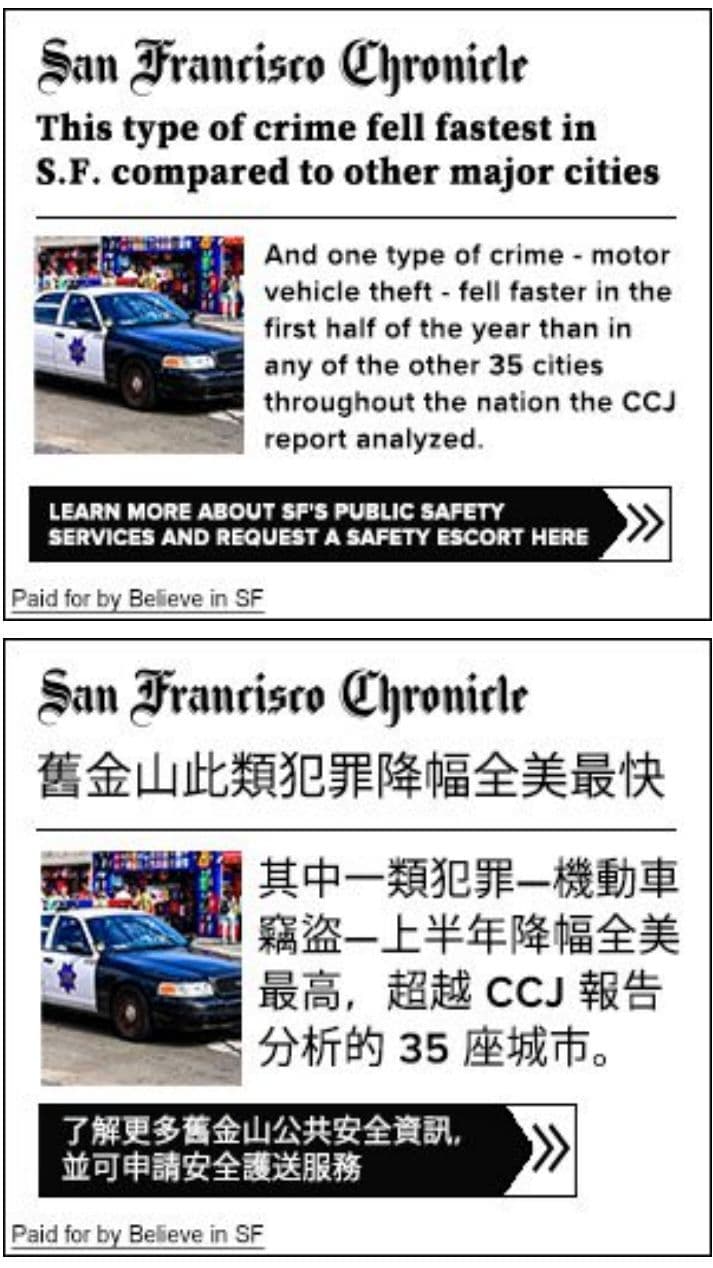The community opposes the removal of a historic pedestrian bridge with good Feng Shui for renovating Portsmouth Square

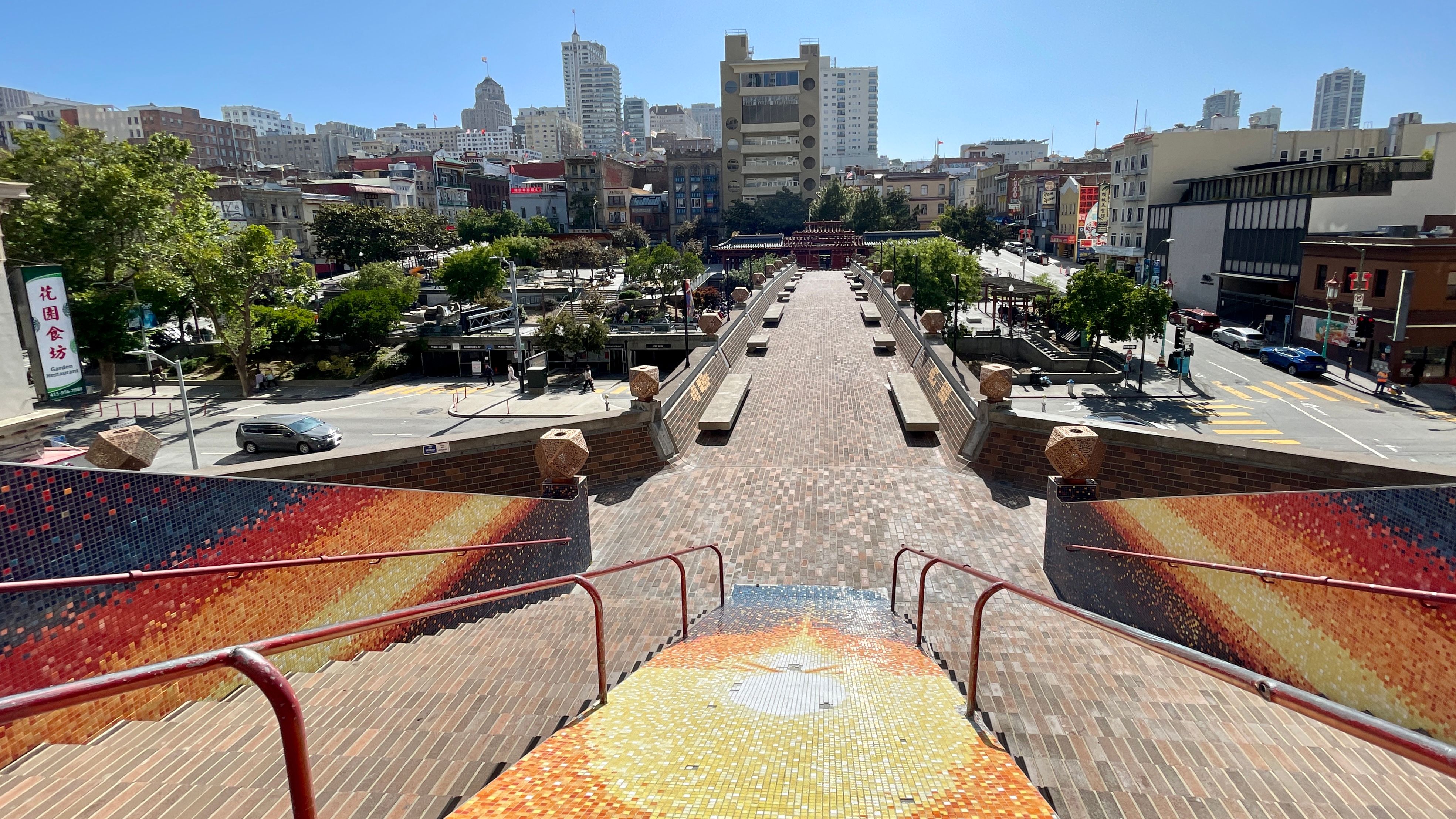
SAN FRANCISCO — The pedestrian bridge connected the Hilton Hotel to Portsmouth Square has been an icon and landmark of San Francisco Chinatown for over five decades. It also has had a profound Chinese American history of fighting for representation, providing a peaceful and safe open space for children and seniors, and good Feng Shui bringing in well-being to Chinatown. Leaders and members of the Chinese community have been trying hard to save the bridge from being removed by the city under the approved plan of Portsmouth Square renovation.
When Mayor Daniel Lurie was running for the job as an outsider in November 2024, Chinese Americans overwhelmingly voted for him with high hopes that he would make changes and listen to the Chinese community.
The city is almost ready to tear down the historic Portsmouth Square pedestrian bridge. It is scheduled to be demolished after the Chinese New Year celebrations in early 2026. The Chinese community urges Lurie to reconsider the renovation plan and save the bridge which has brought in good Feng Shui for Chinatown for over 50 years.
Portsmouth Square is very unique both for San Francisco and the city's Chinatown. It was first used as a public gathering site in 1833 and was set aside as a plaza in 1835. It is the first park in the history of San Francisco, predating both Washington Square (1847) in the North Beach and Union Square (1850) in the downtown, according to the report by the Bay Area Wikipedia.
Portsmouth Square was formerly known as Portsmouth Plaza and was established in the early 19th century, during the period of Mexican California. The plaza was renamed following the U.S. Conquest of California in honor of the USS Portsmouth, the American ship which captured the city. It is bounded by Kearny Street on the east, Washington Street on the north, Clay Street on the south, and Walter Lum Place on the west in the area of Chinatown.
In the 1860s, the park was laid out with paved paths radiating out from the center, dividing the area into wedge-shaped lawns. The park became part of Chinatown by the time the Chinese American community was growing in the 1880s.
A parking garage underneath Portsmouth Square was approved in early October 1959 by the San Francisco Board of Supervisors. The construction began in 1961 and completed in 1963. The Portsmouth Square Garage owned by the City has become the largest public garage for Chinatown since then and provided parking spaces for 500 cars distributed on four levels.
Across from Portsmouth Square, Hilton Hotel at 750 Kearny Street was the site of the San Francisco City Hall in 1852 and later Hall of Justice in 1900 which housed the headquarters of the San Francisco Police Department. The old Hall of Justice on Kearny Street was destroyed in the 1906 earthquake and rebuilt after the quake staying at the same site for 60 years until 1967 when it was demolished.
The San Francisco Planning Commission authorized the sale of the old Hall of Justice site in December 1960 to private developers. The Board of Supervisors voted in 1965 to allow the San Francisco Redevelopment Agency to take over the planning the re-use of the site.
In February 1963, the San Francisco Greater Chinatown Community Service Association (SFGCCSA) was formed by a group of Chinese American leaders to lobby the San Francisco Board of Supervisors for converting the old Hall of Justice into a publicly-accessible facility to serve the Chinatown community.
Once the group learned that the land was acquired to build a 21-story Holiday Inn Chinatown, the group modified their plan to establish the Chinese Culture Center in the future hotel building. The SFGCCSA was reorganized as the Chinese Culture Foundation (CCF) of San Francisco in October 1965 by financier J.K. Choy, Joe Yuey, and others.
In November 1965, the Board of Supervisors approved the creation of a Chinese Cultural Center within the new building with a minimum of 20,000 square feet of floor space. The Chinese Culture Foundation signed a 50-year lease with Justice Enterprises, the developer of the Holiday Inn Chinatown, in 1967 with the space to be rented for Chinese Cultural Center at an annual cost of $1, and the lease could be extended for 10 more years if the property was still being operated as a hotel.
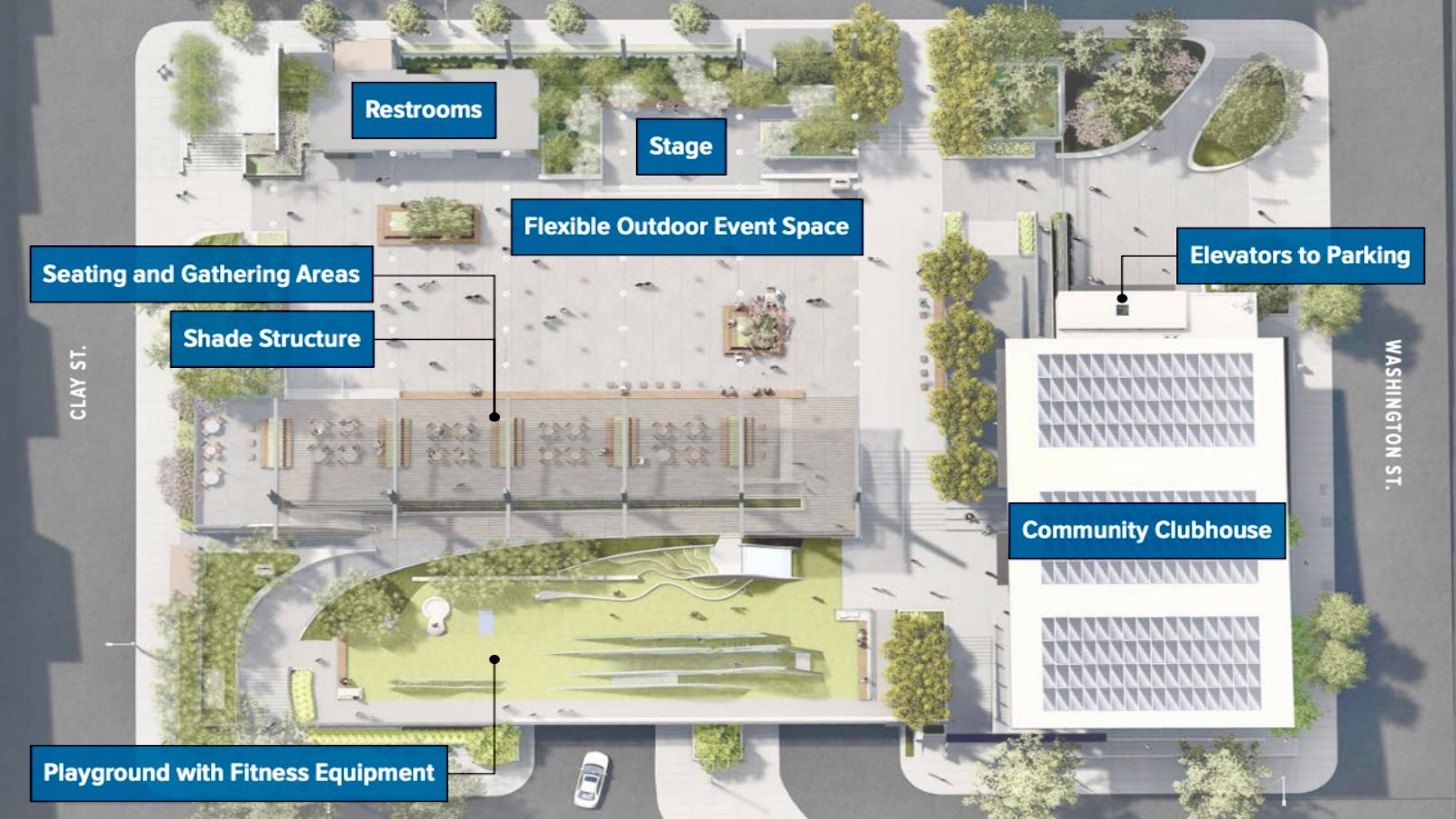
Both the hotel and pedestrian bridge designed by Chinese American architects
The concept of a high rise hotel with a pedestrian bridge linking to Portsmouth Square over Kearny Street was developed by a team led by Chinese-American architects Clement Chen and Dartmond Cherk working with structural engineering firm T.Y. Lin.
Both the Holiday Inn Chinatown and the pedestrian bridge were first designed by Clement Chen. The San Francisco Examiner reported in 1965 that Clement Chen stated his design for both structures was meant to be "a majestic landmark for Chinatown and San Francisco to serve as a symbol of the gateway to the Orient."
Chinese American architect Chi-Kwan Chen later took over and finished the final design of the bridge.
Holiday Inn Chinatown opened in January 1971. The 275-feet-long and 20-feet-wide pedestrian bridge project linking the hotel to Chinatown was approved by the city in 1968 and completed in 1971. The hotel was rebranded as the Hilton San Francisco Financial District in January 2006 up to the present.
The ownership of the pedestrian bridge was not clear, as the original agreement in 1968 stated it would be built and maintained at no cost to the city, according to a San Francisco Planning Department report retrieved in June 2021.
The current renovation project for Portsmouth Square started its planning in 2017. It is scheduled to begin the construction in early 2026 and expected to open the new park in mid 2028.
During the past eight years of planning, the city's Recreation and Park Department has held meetings with mostly the Chinatown-based non-profit organizations which have been in support of the improvement project, including removing the pedestrian bridge which connects Hilton Hotel to Portsmouth Square.
However, leaders and members of the Chinese community, who are unrelated to any non-profit organizations, have overwhelmingly told Wind Newspaper that they have strongly opposed the demolition of the bridge since the beginning and their opinions had been overlooked by the City.
Ann Yuey: our community raised funds to build the Portsmouth Square Bridge
Ann Yuey is the widow of Joe Yuey who was one of the leaders at SFGCCSA and the Chinese Cultural Foundation in the 1960s to advocate for the Chinatown community. Joe Yuey was the owner of long-running famous Chinese restaurant Tommy Toy's which was closed in 2013.
When Ann Yuey learned that the city was planning to demolish the Portsmouth Square Bridge a few years ago, she tried to save the bridge.
Ann Yuey recalled her husband and a group of Chinatown leaders spent 10 years from 1963 to 1973 donating and raising funds from coast to coast for building the Portsmouth Square Bridge.
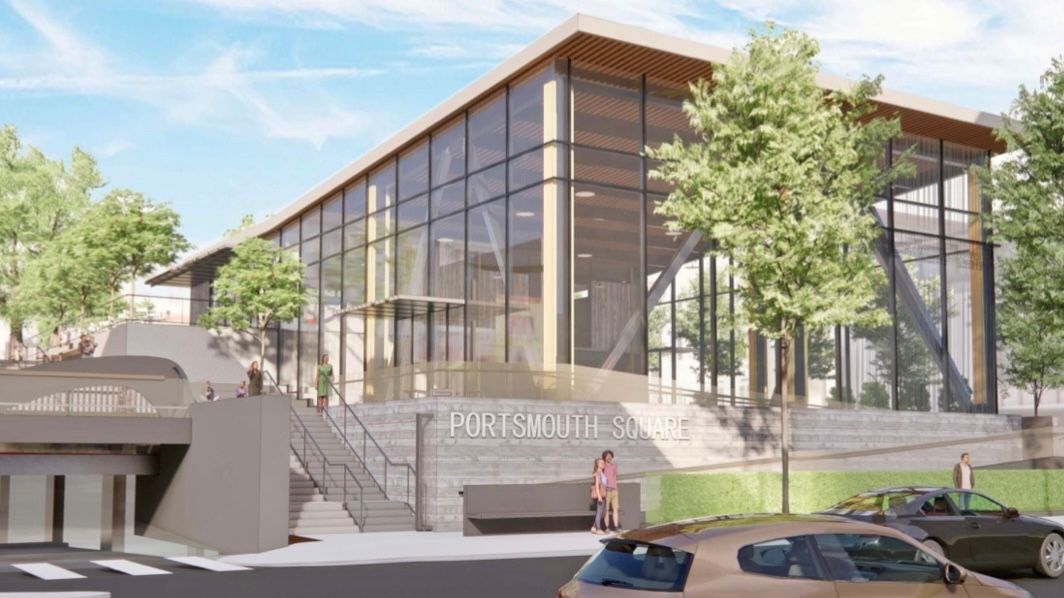
"Joe loved Chinese art. He had a vision to advance Chinatown's economy by promoting Chinese culture and arts. The Portsmouth Square Bridge is about Chinatown's history and culture. The bridge could not be replaced and should not be removed," said Ann Yuey.
"In those days, it was not easy for community members to cross Kearny Street going to the Chinese Culture Center from Chinatown," Yuey said. "Joe and his friends wanted to build a bridge for their convenience and served as an easy venue for everyone to do exercises under the sun and hold outdoor events."
In April 2022, the Board of Supervisors voted unanimously to revoke the permit for Portsmouth Square pedestrian bridge and authorize the removal of the bridge.
The estimated cost to demolish the Portsmouth Square Bridge was $2.1 million. Some reports stated the cost might rise to $4 million to $5 million for the removal.
It was reported that Hilton Hotel opposed the removal of the bridge and didn't want to pay for it. The cost of demolition has been a subject of negotiation between Hilton Hotel and the City. The management of the Hilton Hotel Financial District did not respond to repeated requests for comment by press time.
"The cost for demolishing the bridge will be huge. The City should spend those money more wisely on public safety to protect people in San Francisco instead of destroying the history of Chinatown," said Yuey. "It is so crucial for all of us to preserve history. That is why Chinatown is very popular among tourists. They come here to understand Asian American history in San Francisco and look at our old buildings."
Sam Kwong: the City has never shown an alternative design keeping the Bridge although the EIR report clearly mentioned
Sam Kwong, an architect with his firm located in Chinatown for decades, spoke publicly at the Board of Supervisors meeting in 2022 against the revocation of a permit for Portsmouth Square Bridge. Kwong urged city officials to have more meaningful dialogue between all stakeholders, not only the non-profit organizations.
"Back when the project was developed 50 years ago, the City insisted on including a bridge from the Hotel and the Cultural Center into Chinatown. You may like or dislike the bridge, but there was a genuine public and private partnership to build something the City wanted at the time," Kwong told the Supervisors. "Today, it appears the Recreation and Parks Department does not want to pay for the demolition and the City insists on shifting the cost of removal of the bridge to the Hotel developer. This means the City is going to ignore a 50-year public-private agreement and change the rules of the game."
"The cost for all the work is approved by voters in the 2020 Proposition A. As a voter and home owner myself, I hate to see money wasted," Kwong said. "The arguments to remove the bridge is so weak because it is unsubstantiated and with no data to back up any of the arguments."
"I have seen the proposed plans for the park, it is impressive, but I was never shown an alternative design keeping the Bridge although the Environmental Impact Report clearly mentioned this option," Kwong spoke to the Supervisors.
"Trust me, I want to see a better Portsmouth Square and I want to see Chinatown and all those doing business there to recover from the pandemic, but you need to be honest to the public, we deserve it," Kwong added.
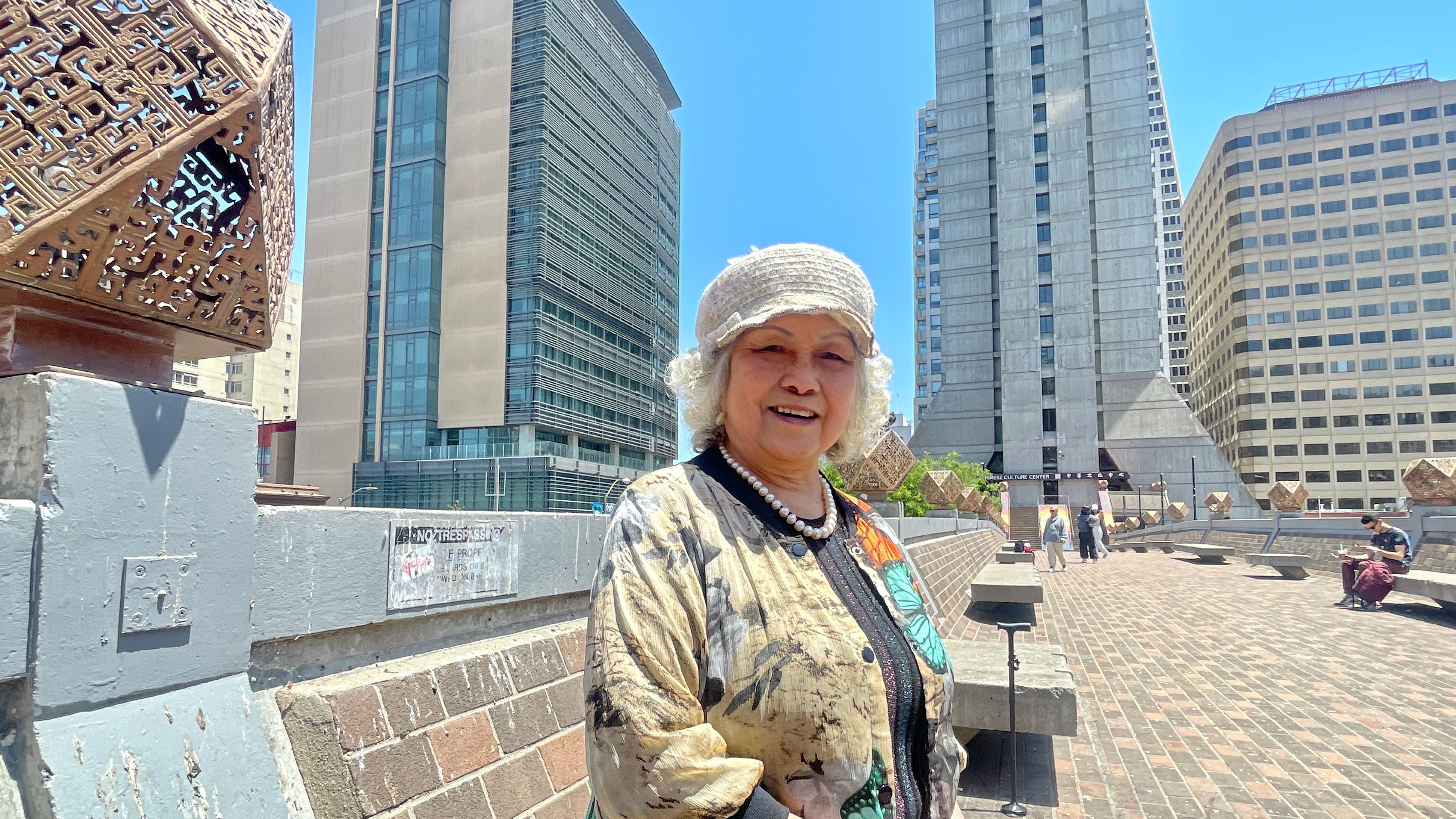
As a bilingual Chinese American architect, Kwong understood the Chinese Feng Shui practice. "The bridge was part of the deal to connect the Cultural Center within the development and the Portsmouth Square. To me this is also a Feng Shui feature that links Chinatown community to a downtown development. A connection to the financial district development in which we want downtown people to spend their money in Chinatown. Removing the link is like cutting off a lifeline we should maintain," said Kwong.
Robert Chiang: Chinatown community needs more open green spaces, not a bigger indoor clubhouse
Robert Chiang, a construction firm owner in San Francisco since 1978, agreed that the Portsmouth Square Bridge has brought in fortune and well-being to Chinatown in the Feng Shui culture for over 5 decades.
"Prior to the 1989 San Francisco earthquake, there were two bridges connecting Chinatown to San Francisco downtown, the Portsmouth Square Bridge and Freeway 480 over the Embarcadero Boulevard," Chiang said. "Older generations would still remember well that Chinatown was very much blooming in economy in the old days. Chinatown was crowded with people from day into the nightlife. Stores and restaurants stayed open until late night, even 2 to 3am."
"Once the Embarcadero Freeway was damaged in the 1989 quake and removed. One bridge connected to Chinatown in the Feng Shui perspective as a lifeline was also gone. The Chinese community was against the removal of the freeway. As a result, the Chinatown economy has never recovered," said Chiang.
Since the 1989 quake, Chinatown stores have closed earlier and earlier. The businesses in Chinatown have struggled to survive, especially after the COVID.
“If the only left Feng Shui Bridge [Portsmouth Square Bridge] is ultimately removed, the economy in Chinatown is expected to be even worse," said Chiang.
Chiang is also a leader in the family association community. He has not seen the City trying to get feedback from the family associations related to Portsmouth Square renovation.
“The Chinese Consolidated Benevolent Association (CCBA) just celebrated its 175th anniversary in 2024. Politicians always walk in CCBA’s monthly meetings seeking support, but none of them have mentioned the plan to remove the Portsmouth Square Bridge to us,” Chiang said.
In the renovation plan, the Portsmouth Square Bridge will be removed primarily for the purpose of creating rooms to accommodate a bigger community clubhouse.
According to the latest information released by the City’s Recreation and Parks Department, the original $66 million project to rebuild the park has been over the budget.
In Chiang’s opinion as an expert in construction, the indoor community clubhouse should not be built for a number of reasons.
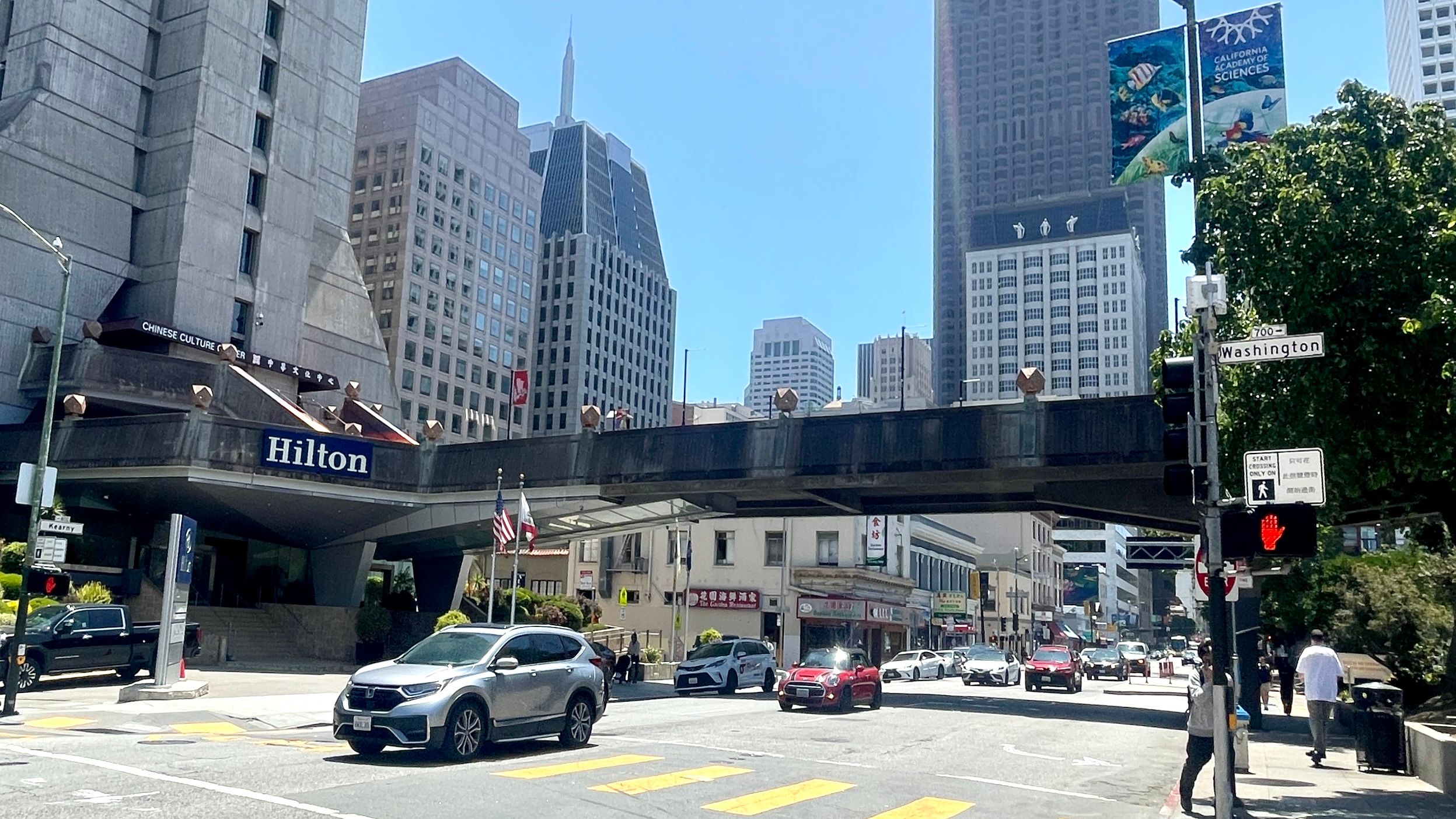
“Portsmouth Square is a very small park. A park is a site with open green spaces. The Chinatown community needs a bigger park with more open spaces, not an indoor facility managed by non-profits and closed for the general public most of the time,” said Chiang. “Building a big clubhouse is very expensive. The demolition of a bridge is also very expensive. There are many ways to avoid tearing down the Feng Shui Bridge and save money and serve the entire community better.”
Thomas Ng, respected Chinatown leader and called “Mayor of San Francisco Chinatown”, strongly opposed the removal of the Portsmouth Square Bridge and has not heard of the plan from any city officials. Ng sits on the board of CCBA for 5 decades.
“The Portsmouth Square Bridge has provided multiple functions to the community. The community has always held events at the Hilton Hotel. We have many guests from out of town and overseas staying in the Hilton Hotel. We can walk safely and faster to the Hilton Hotel on the bridge to avoid crossing the busy Kearny Street. Did the City think of the safety of our community members, seniors and children?” Ng said. “The bridge provides a huge open space for us. Why did the City say the removal of the bridge will have more open spaces? It doesn’t make sense.”
Albert Chang: Did the City only listen to the non-profits?
Albert Chang, owner of the kite shop in Chinatown since 1972, has experienced the ups and downs of Chinatown's economy. “I have been here in Chinatown everyday for 53 years. Why did the City approve to remove the Portsmouth Square Bridge? Did the City only listen to the non-profits for their own interests?”Chiang asked.
“The non-profits occupy more and more buildings in Chinatown in recent years through city and state public funds that have gradually killed the Chinatown economy. No one would come to Chinatown for shopping if more and more stores became offices. This is what has been happening now,” said Chang.
“Portsmouth Square is a very small park. We need more spaces for everyone to stay healthy and safe outdoors. If Mayor Lurie and the City really want to provide the best service for the Chinese community, the bridge should not be removed,” said Chang. “Why would the City waste huge taxpayers’ money to demolish the bridge in order to build a big indoor clubhouse for limited uses?”
The San Francisco Recreation and Parks Department responded that the Portsmouth Square Improvement Project has been approved and entitled. It was fully authorized to move forward.
Construction is expected to begin in March 2026, right after the Lunar New Year and 5.5 months later than originally planned.
The removal of the bridge will be prior to the start of construction to rebuild the park. “The details around cost and who will ultimately pay for it are still being worked out,” said Tamara Aparton, spokeswoman of the City’s Recreation and Park Department. “We are currently rebidding the project, which has shifted the schedule slightly, but the scope of the project remains the same.”
The rebid will be released in early September 2025 and the bids will be due at late October 2025. According to Aparton, the rebid is necessary because all contractor bids came in significantly over the approved $43 million budget. The cost overage is due to global tariffs, ongoing supply chain challenges, and widespread construction inflation. Rebidding now is the most responsible approach. It will protect public funds, preserve access to time-sensitive bond and state funding and avoid a full redesign that could delay the project by years.
Mayor Lurie’s office responded with a statement. “Portsmouth Square serves not just as a vital community hub for the Chinatown community, it is a welcoming site for visitors from across San Francisco and around the world. For decades, this square has served as the living room of Chinatown and we are making sure it receives the investment it deserves to be a clean, safe, and welcoming space for the neighborhood for decades to come.”
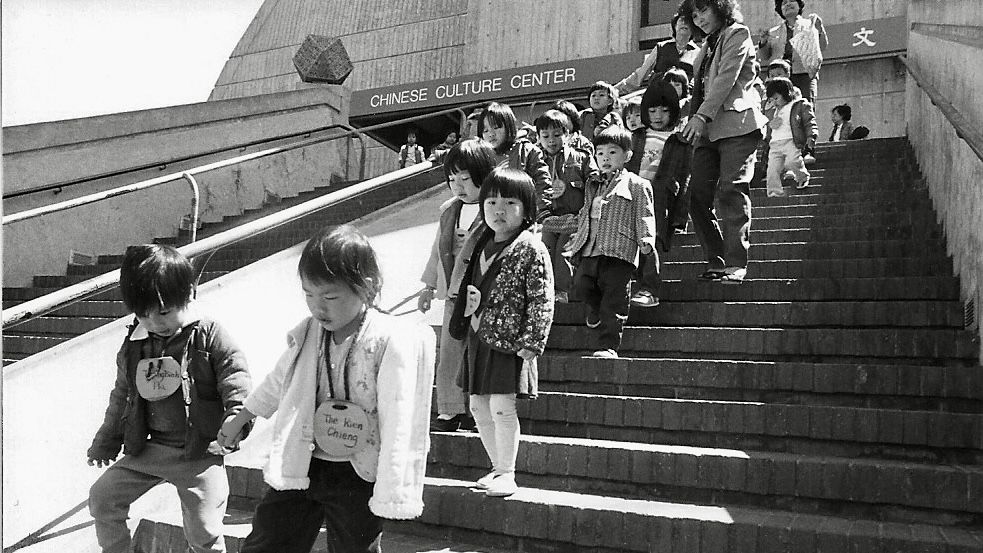
“To ensure that we don’t lose crucial state funding to bring this project to life, our office is working closely with community members to move the project forward. This administration remains committed to fostering strong collaboration among City departments and keeping the community informed every step of the way,” Lurie’s office wrote.
D3 Supervisor Danny Sauter who was newly elected in November 2024 to represent Chinatown said he has not heard of the opposition in removing the Portsmouth Square Bridge.
“We are frustrated with the delay but are working closely with Rec and Parks to find ways to lower costs and get new bids in quickly. Our office has not received any communication supporting keeping the bridge up,” said Sauter. “The beautiful new park design is dependent upon having more room for the Clubhouse and playground areas that the bridge currently blocks. We recognize this has been a long community process to reach this design and wish to focus on moving towards breaking ground as quickly as possible.”
Chinatown Community Development Center (CCDC) is one of the largest Chinatown-based non-profit organizations and has played a significant role in working with the City on the Portsmouth Square renovation.
"CCDC worked with community members and groups over the past decade to ensure their voices were heard during the development of the Portsmouth Square Improvement projects,” CCDC wrote in a statement.
“Previous engagement activities led by the Department of Parks & Recreation have identified the bridge is an area of significant negative feelings, and there has been a lot of excitement from community members on the opportunity to turn the area into a bright community space (managed by Chinatown community organization Self-Help for the Elderly) with the new Clubhouse designs,” CCDC further said. “We're supportive of the Department of Parks and Recreation's urgency and prioritization in moving the construction of the park forward with the release of their construction bid documents and look forward to having an important community space updated and modernized for Chinatown."
- Tech entrepreneur & political advisor Saikat Chakrabarti runs for Congress to fill Nancy Pelosi’s House seat
- Kenneth Binder appointed as San Mateo County Sheriff for a 3-year term
- U.S. Representative Nancy Pelosi to retire in Jan 2027 after 40 years in Congress representing San Francisco
- New federal and state rules on eligibility of public benefits to affect undocumented, non-citizen immigrants from Jan. 1, 2026
- Three finalists among seven candidates named for the next San Mateo County Sheriff
- Police search for man who allegedly stole two 28-inch-tall popular Labubu dolls worth of thousands of dollars
- San Francisco launches a new $3.6 million Downtown SF Vibrancy Loan & Grant Fund to encourage small businesses to fill vacant storefronts in downtown
- SNAP (Food Stamps) to stop issuing funds in November, participants begin to save current benefits for future food


